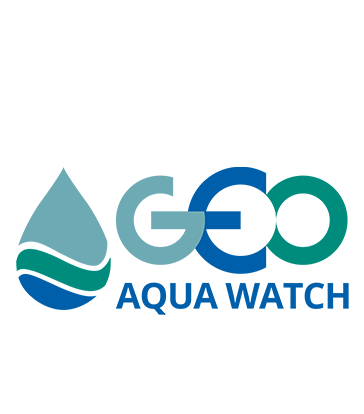Category: Uncategorized
USGS – Remote Sensing & AAUS Cert. SCUBA Diver Job Opportunity, Santa Cruz CA USA
the U.S. Geological Survey are looking for a Physical Scientist / Geographer (https://www.usajobs.gov/job/759059600) to join our team at the Pacific Coastal & Marine Science Center in Santa Cruz, California.
Specific duties will include:
- Use ArcGIS, MATLAB, Python, and Google Earth software for applications to ecosystems and climate change impact studies in coastal settings.
- Process and manipulate various complex geospatial datasets (e.g., remote sensing imagery, bathymetric data sets, sediment composition) to interpret geologic and oceanographic processes and delineate benthic habitats.
- Use ArcGIS and related software for applications for estuarine, coastal, and marine topographic, bathymetric, and sediment transport studies.
- Manage and co-author reports and maps to inform the scientific community of results of research.
- Work directly with editing and publishing groups to see products through the complete publication process.
The work will initially support our science on tropical coastal hazards and ecosystems across the globe, from the Mariana Islands in the western Pacific Ocean to the Virgin Islands in Caribbean. See these links for more information on the science questions and goals:
Coral Reef Project:
https://www.usgs.gov/centers/pcmsc/science/coral-reef-project
Coastal Climate Impacts Project:
https://www.usgs.gov/centers/pcmsc/science/coastal-climate-impacts
Physical demands:
Field assignments involve outdoor work where there is considerable walking and climbing over rough terrain. The work required physical exertion such as lifting heavy objects over 50 pounds and working on vessels at sea.
NOTE: The applicant must be AAUS-quality scientific scuba diver certified.
Salary: $70,674 – $111,157 per year
Pay scale & grade: GS-9 to GS-11, depending on qualifications
Duration: This is a 13-month position, renewable up to 4 years.
Remote Job: No
Telework eligible: Yes — as determined by the agency policy.
Travel Required: Occasional travel — You will be expected to travel for this position.
Vacancy Announcement: USGS-SAC-24-12194948-DE-ML (will close Monday 11 December 2023)
The full job announcement and how to apply can be found here: https://www.usajobs.gov/job/759059600
Remote Sensing/Spatial Ecology Intern – Virginia, USA
The Conservation GIS Lab (https://nationalzoo.si.edu/conservation-ecology-center) at the Smithsonian Conservation Biology Institute (SCBI) is seeking interns to start immediately. The internship project will focus on exploring the application of remote sensing space-borne lidar data (GEDI) and optical data (e.g., Sentinel or Landsat series) to classify vegetation types, particularly understory bamboo and woody invasive plants.
Learning objectives:
- Pre-processing forest survey data and spatial datasets at a local or regional level
- Extracting GEDI metrics using Google Earth Engine and Python or R
- Building predictive spatial models for vegetation type classification using statistical analysis and machine learning algorithms.
- Gain experience with the analysis of GEDI data, spatial data analysis, and scientific communication.
Qualifications:
- A Bachelor’s degree is required, and a Master’s degree is preferred.
- Commitment to a full-time schedule of 40 hours per week.
- Strong background in programming (Google Earth Engine (required) and Python (preferred) or R).
- Knowledge of GIS (preferably ArcGIS or QGIS) and remote sensing analysis is desirable.
- Strong writing skills
- Ability to conduct research independently and yet collegially in a team environment.
Benefits:
- A competitive stipend of up to $1,600 monthly, based on education and experience.
- Free dormitory-style housing on the SCBI campus.
- Interns will have access to a computer and reliable high-speed internet.
Location & terms of appointment:
- On-campus internship in Front Royal, VA
- Minimum commitment of six months, beginning as soon as possible, with priority to longer-term candidates.
- Engaging with a cohort of fellow interns and researchers through regular meetings and communications.
How to apply:
- Applications are open until the position is filled.
- Apply via the Smithsonian SOLAA system (https://solaa.si.edu/solaa/#/public). Search for “Internship” under “National Zoological Park”. The program name is “Conservation GIS Internship Program”.
- Submit a CV and a cover letter detailing:
1) Statement of Interest
2) Potential start date and the duration of time you are available for the internship.
3) Contact information for three references.
4) Elaborate on your programming experience and skill as much as possible.
Note:
1) Successful candidates may need a background check, which might include fingerprinting at a Smithsonian or police facility.
2) Due to a high volume of applications received, we are unable to contact each applicant individually regarding the application status. The SOLAA application system will provide the most updated status regarding individual applications and the position.
About SCBI:
The Smithsonian Conservation Biology Institute is located at the north entrance of the Shenandoah National Park in Front Royal, VA, about 60 miles west of Washington, D.C. Dedicated to promoting the conservation of biological diversity, SCBI not only furthers the Smithsonian Institution’s broader objectives but also enriches our understanding by studying endangered species, habitats, and communities. Beyond research, SCBI plays an important role in sharing these insights through advanced studies, professional training programs, and public outreach.
University of Stirling PhD Opportunity
Monitoring Scotland’s fresh waters from space: re-engineering the state-of-art using artificial intelligence
The studentship will be broadly structured into three inter-linked phases: (1) global model development and testing; (2) model validation for UK waters; (3) model fine-tuning and operationalisation – but with flexibility for the student to pursue other complementary research objectives as the project develops.
The studentship will capitalise on the wealth of existing data held by the Earth observation research group at the University of Stirling as well as community-owned databases (e.g., Limnades) and published datasets (e.g., Gloria). This will be augmented by in-situ monitoring data from SEPA and Scottish Water.
The ambition of this studentship is to fundamentally re-think how we use AI/ML methods for water quality mapping from space across the entire data processing pipeline, from pre-processing (e.g., atmospheric correction) through to the quality control post-processing, and possibly even for automating data interpretation. The student will work with experts in Earth observation and data science to re-engineer current approaches to the remote sensing of water quality with the prospect of the outputs of this research being embedded in future versions of the UK Lakes Observatory – our current operational water quality service. With support from key industrial partners, including the Scottish Environment Protection Agency (SEPA) and Scottish Water, this studentship has the potential to transform how we monitor Scotland’s rivers and lochs in the future.
Background:
Scotland’s freshwater ecosystems are under significant pressure from a range of stressors including inputs of diffuse pollution from agriculture, wastewater spillages from combined sewer outflows, and the increasing occurrence of hydroclimatic extremes (Marsden & Mackay, 2001; Krokowski, 2022; May et al., 2022). Identifying and understanding the effects of these pressures on water quality is pivotal to inform management and restoration strategies, to apprise future regulatory and policy frameworks, and ultimately to protect biodiversity and human health. However, organisations across the water sector, from government regulators through to water utilities, are finding it increasingly challenging using traditional methods to collect the data they need to evidence decision-making. What is more, the move towards net zero operations is forcing the industry to re-think its use of resources and to seek ‘smarter’ ways of collecting and using data.
Monitoring water quality at scale has always been a challenge. Conventional sampling programmes are resource intensive and, while networks of high frequency autonomous sensors hold much potential, high capital and maintenance costs remain a barrier to deployments at scale. Conversely, satellite remote sensing provides a relatively cost-effective means of collecting data on surface water quality over large geographical scales – while also providing observations at a frequency that enables both short-term events (e.g., storm-induced sediment resuspension, algal blooms) and longer-term changes (e.g., those driven by catchment land-use and hydroclimate change) to be resolved. However, the accurate estimation of water quality parameters (e.g., turbidity, chlorophyll-a) remains a challenge for applications over inland waters – particularly for smaller waterbodies only observable from platforms such as the Copernicus Sentinel-2 constellation (Palmer et al., 2015).
Much effort has been invested over the last decade in the development, validation, and fine-tuning of algorithms for the retrieval of water quality parameters from satellite data. Various solutions have been proposed from relatively simplistic empirical models to more complex physics-based solutions (Neil et al., 2019). Recently, there has been renewed interest in the application of artificial intelligence and machine learning (AI/ML) approaches to overcome some of the common limitations of more conventional solutions to the inversion of satellite data. Numerous AI/ML methods have been used to assist water quality mapping from space (Pahlevan et al., 2021; Werther et al., 2022; Yang et al, 2022), some with notable success but, in spite the ever-increasing research base, there remains little consensus on what AL/ML methods perform best and how to apply them.
Call for Nominations GEO AquaWatch Management Team
DEADLINE December 6th!
AquaWatch, the Group on Earth Observations (GEO) water quality initiative is developing and building the global capacity and utility of EO-derived water quality data, products and information to support effective monitoring, management and decision making. GEO AquaWatch seeks nominations of individuals to serve on our Management Team for the 2023-2026 triennium. Early Career Scientists are encouraged to apply. These roles are unpaid and voluntary.
This call seeks individuals from diverse backgrounds and expertise within the water quality community including governmental agencies; academia; industry representatives; and non-governmental-, non-profit-, and intergovernmental-organizations. A variety of stakeholder perspectives is sought for this role – from the data production to the end users. Self-nominations are welcome.
The call seeks candidates with any of the following expertise:
- Operational Forecasting
- Research Interest in the Earth Observation and Water Quality realm
- Responsibility for protection and stewardship of inland and coastal waters;
- Public administration supporting conservation planning, habitat restoration, ecosystem services, sustainable management practices;
- Environmental law and standards, or policy and diplomacy of water quality uses;
- Science communication, education, and outreach;
- Hazard mitigation and disaster response management.
The Management Team ensures the GEO AquaWatch Goals and Objectives are met and carefully considers efforts and activities promoted or endorsed by the Initiative. They are the Working Group Co-Leaders and ensure timely accomplishment and quality control of GEO AquaWatch Workplan Activities undertaken by Working Groups. The Management Team meets monthly via teleconference. Management Team members serve a 3-year term with opportunity to be reappointed for a second 3-year term. The expected time commitment is 5-10 hours per month. Please refer to the GEO AquaWatch Management Team Terms of Reference.
Read the full Call for Nominations here.
If you are interested in nominating someone to serve on the GEO AquaWatch Management Team, please send the name and contact information of your nominee along with and brief statement on the nominee’s experience and expertise relevant to GEO Aquawatch (LinkedIn Profile, CV, resume or websites links) to mbneely@geoaquawatch.org with the subject line “Nomination for GEO AquaWatch Management Team” by December 6, 2023. Review of applications to serve is expected to commence by December 7, 2023, with notification of selected candidates by December 20, 2023. Selected nominees will receive invitations to serve from GEO AquaWatch. For additional information about GEO AquaWatch, please see the GEO AquaWatch website.





